Eight
PRESERVATION AND CHANGE
1974–2000
In the 1970s, citizens helped plan the community of the future, paying special attention to preserving ridgelines, trees, and historic buildings, and laying out a system of trails for use by hikers, bicyclists, and equestrians. As the nation celebrated its bicentennial in 1976, so did Mission San Juan Capistrano, with new focus on stabilizing buildings and becoming a cultural force in the community. Tourists and commuters took advantage of Amtrak service that restarted in 1974. The annual return of the swallows, complete with equestrian parade and community events, had become a target for tourists, along with two buildings constructed in the 1980s: Mission Basilica San Juan Capistrano at the rear of the mission grounds and the San Juan Capistrano Regional Library, designed by Michael Graves, on Acjachema Street.
The community focused on preserving agriculture by passing a $21 million bond measure in the 1990s to pay for 140 acres of open space and there was new interest in revitalizing the downtown and adjacent areas, such as historic Los Rios Street.
Downtown design guidelines and a new park helped to preserve community character while growth in the valleys brought new residents, new businesses, and new schools to the area. Traffic, diversity, density, and school funding emerged as major issues in the 1990s and would continue to dominate in the early years of the 21st century as population continued to grow, not only in city limits, but in other neighboring communities.
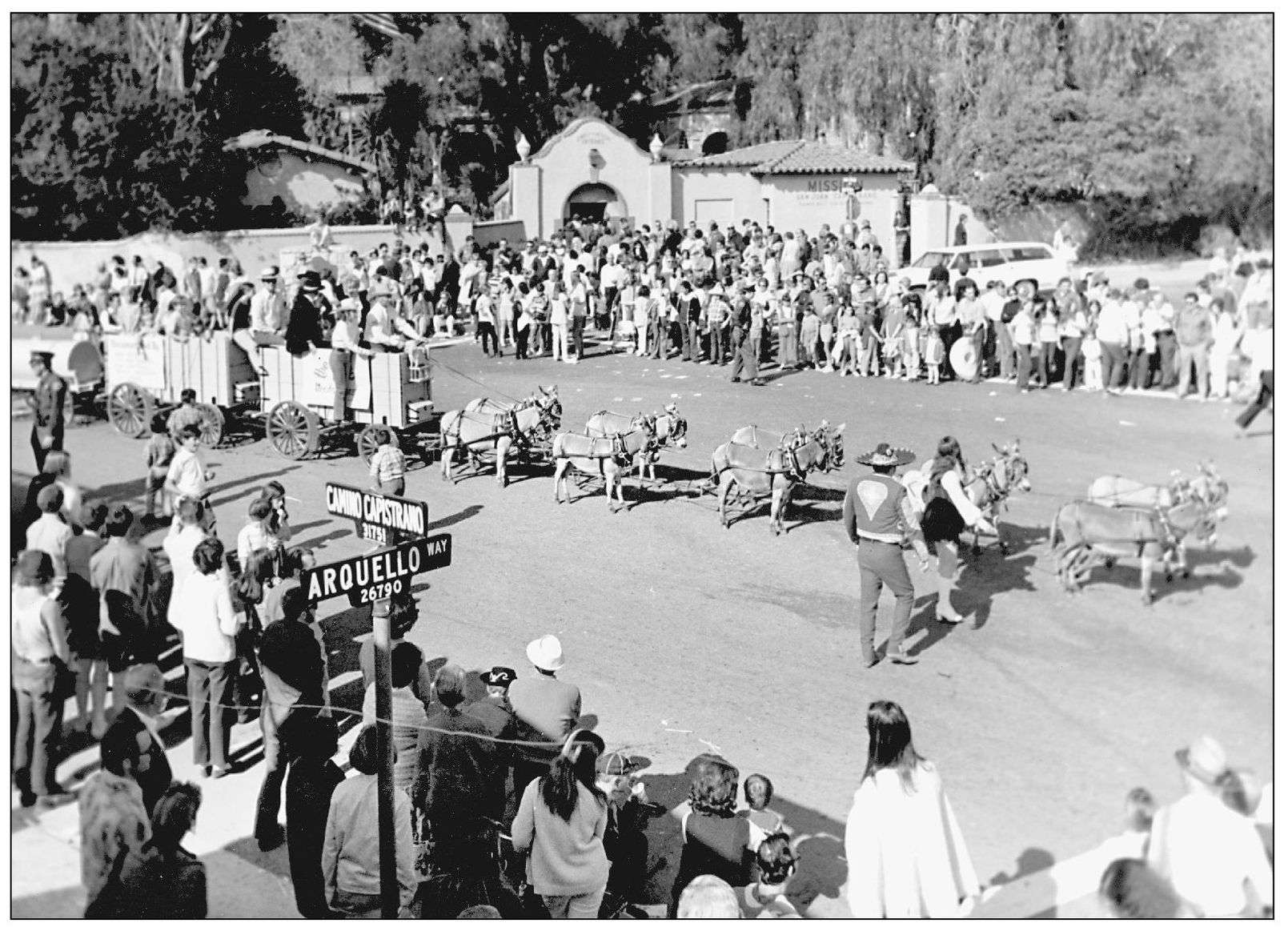
Crowds in 1974 still gathered around the mission for the annual parade to commemorate the return of the swallows. Note Arguello Way, which is the name of the alley between the Capistrano Trading Post and the Capistrano Plaza. It is named for Santiago Arguello, who was administrator of the mission in 1838, and for San Juan de Arguello, the brief original name of the town.
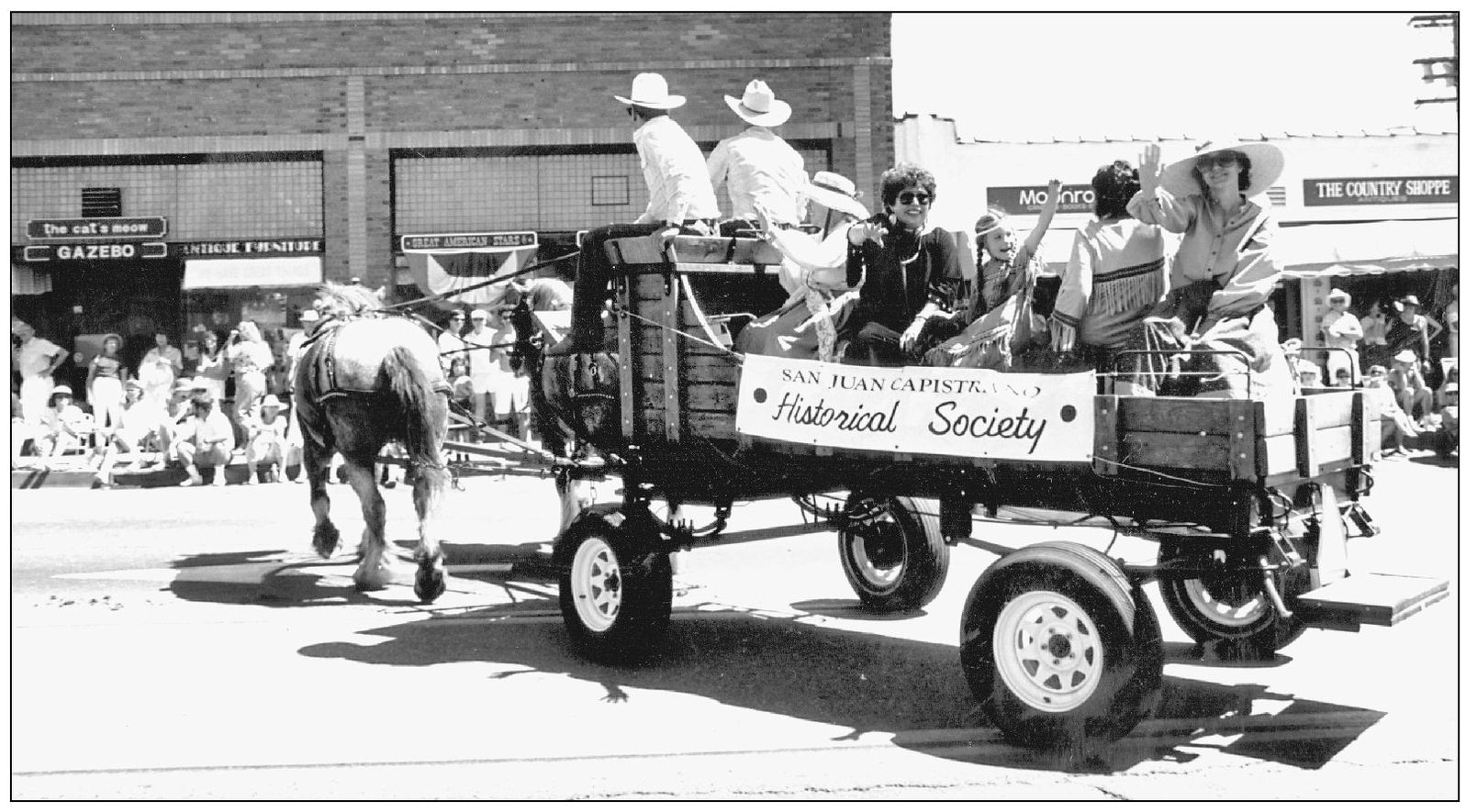
The San Juan Capistrano Historical Society is always represented in the fiesta, and in 1988 entered a horse-drawn wagon in the parade. The structure in the background is the Ferris Kelly building, constructed in the 1920s, which has been a department store, specialty retail stores, and was even the first building used as a city hall.
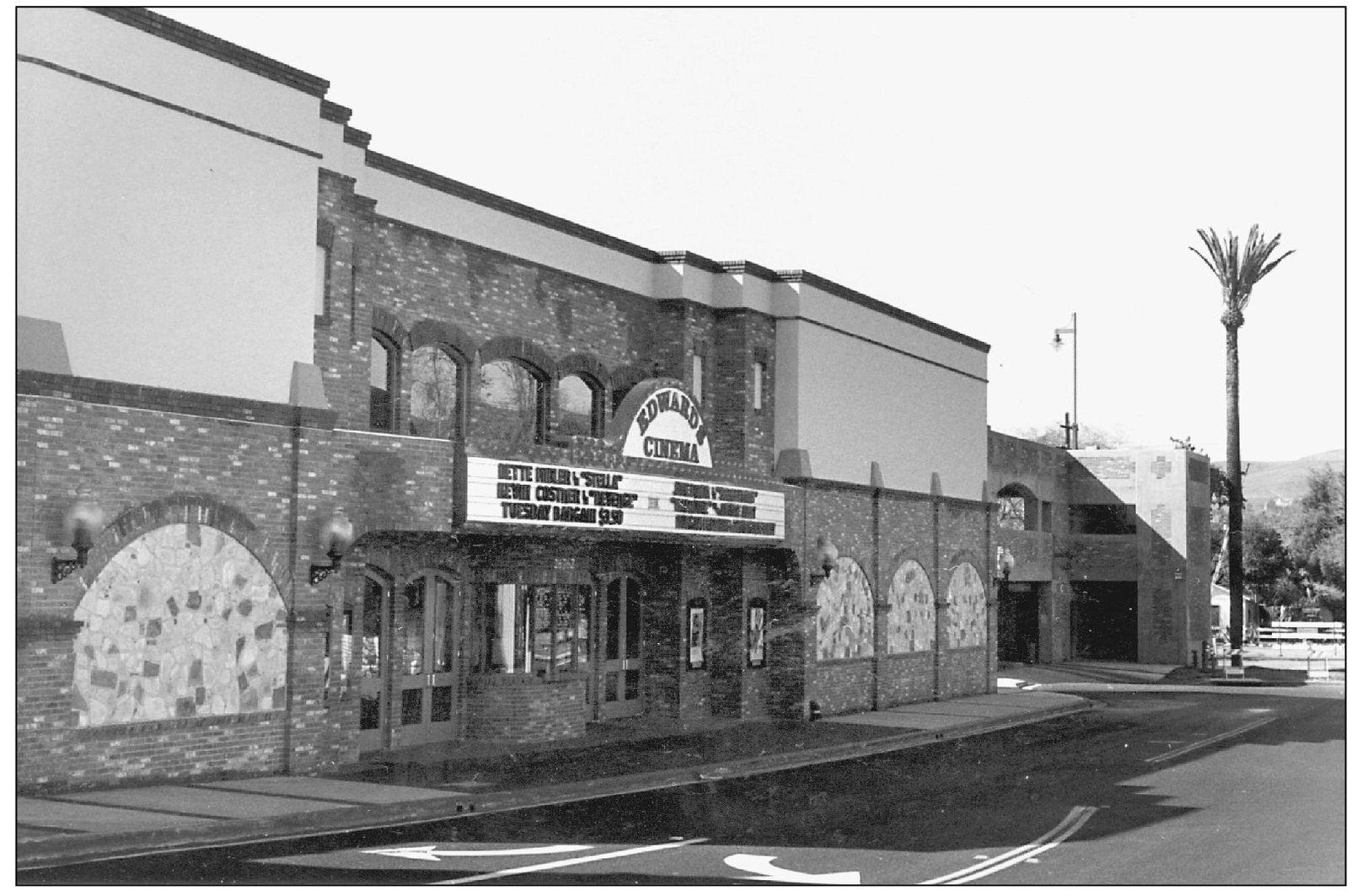
The Franciscan Plaza was under construction in 1990. Built on the site of a previous shopping center that was erected in 1973, the new plaza included a movie theater complex, completed about 1989, and a parking structure on the site of the old Blue Goose packinghouse. The theater was in the same spot as an early movie house that had been gone for decades.
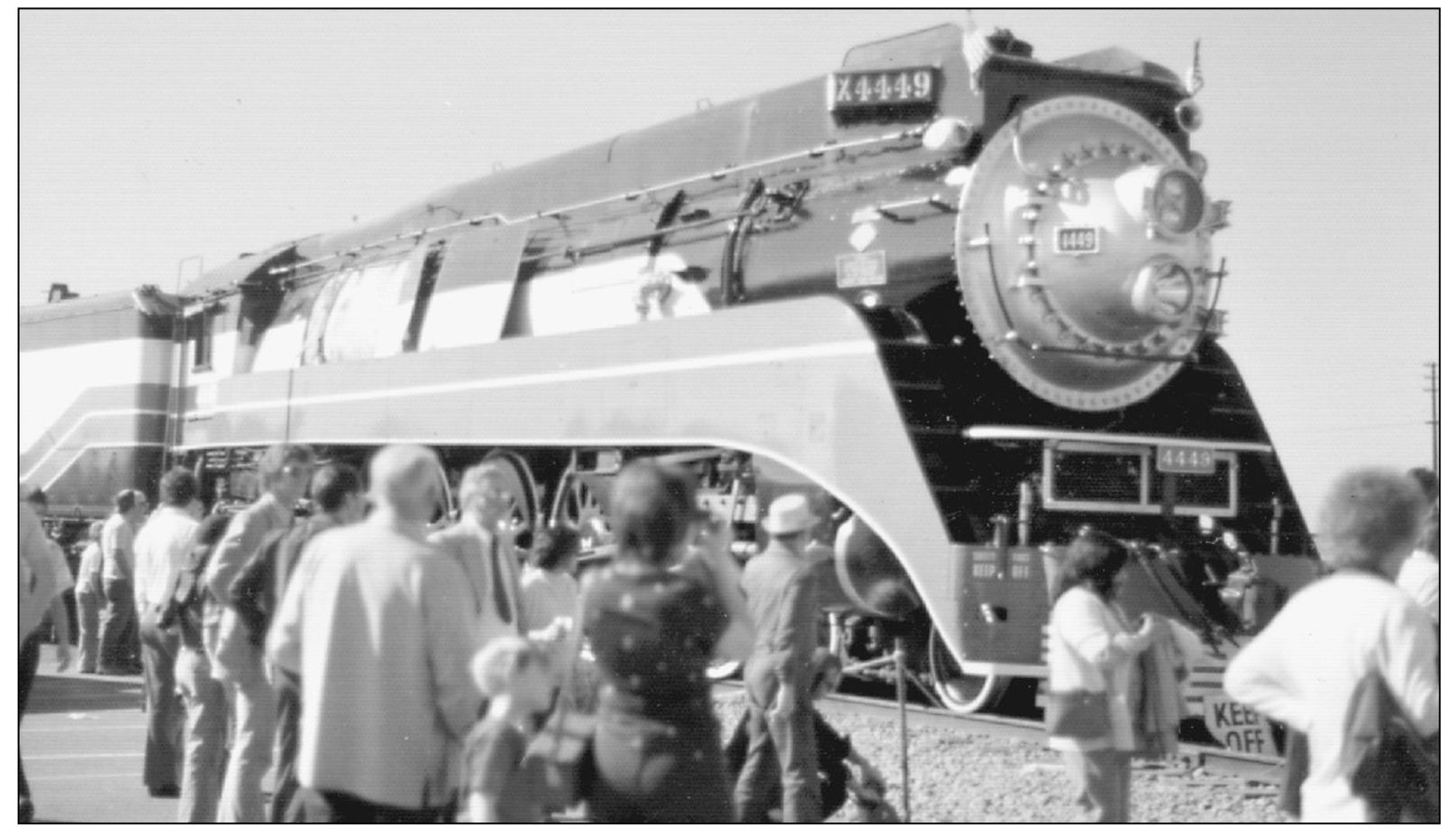
In January 1976, the Freedom Train, a traveling exhibit of memorabilia, stopped in San Juan Capistrano at a siding next to Los Rios Street. The exhibit was put together to commemorate the bicentennial of the United States. The viewing line was five blocks long and streets had to be closed to accommodate the crowds. Among artifacts were the Golden Spike and Wilt Chamberlain’s athletic shoes.
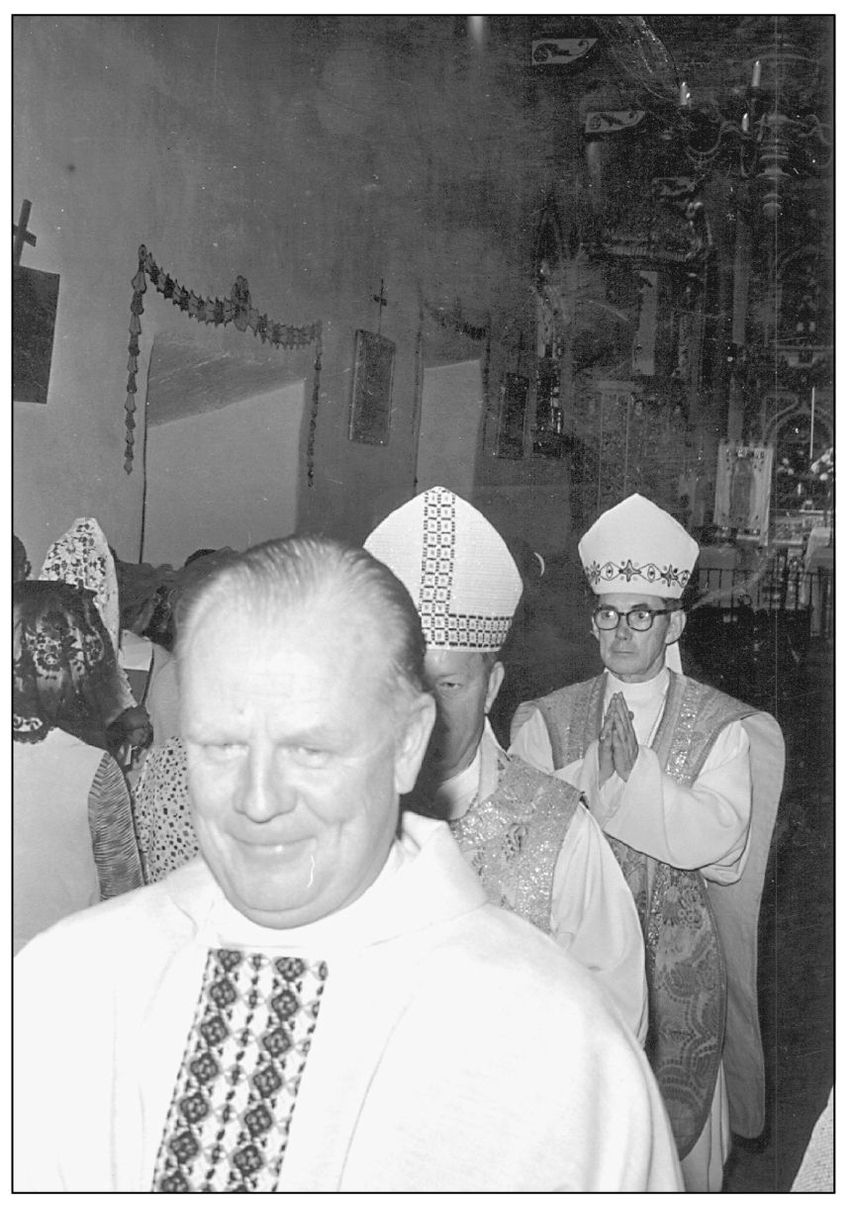
Msgr. Paul Martin (left), who succeeded Msgr. Vincent Lloyd Russell as pastor of the mission, walks in the procession commemorating the 200th anniversary of the mission’s founding on November 1, 1976. Following are Cardinal Timothy Manning (center) and Bishop William Johnson. The ceremony was held in the Serra Chapel, and Cardinal Manning was garbed in original mission vestments for the occasion.
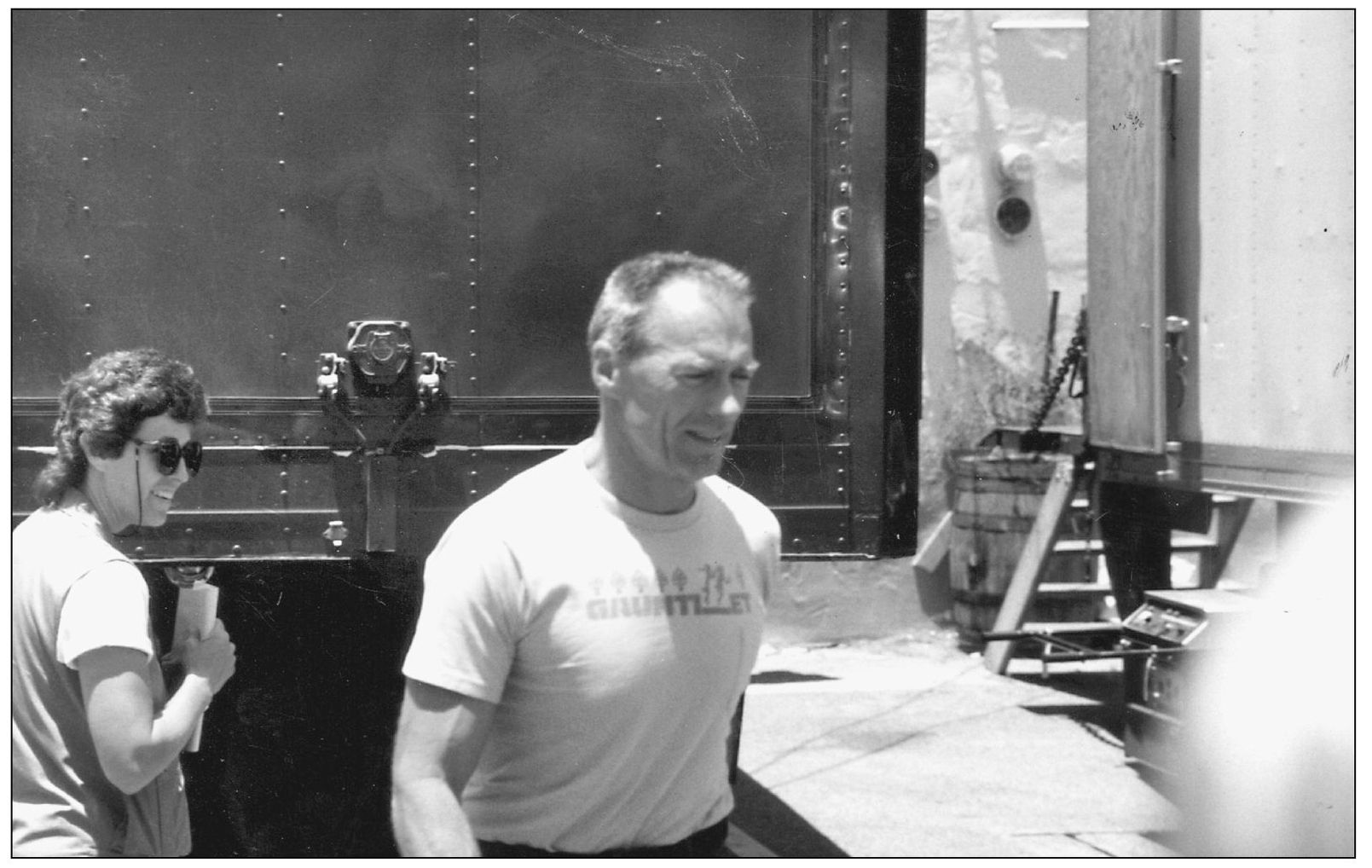
Clint Eastwood emerges from his trailer behind the Swallows Inn in 1986. Eastwood starred in, and directed, Heartbreak Ridge, which was filmed partly in San Juan Capistrano. The film told the story of a Marine sent to invade Grenada. The entire film company took over several parking lots on El Camino Real and used a few local residents in background scenes.
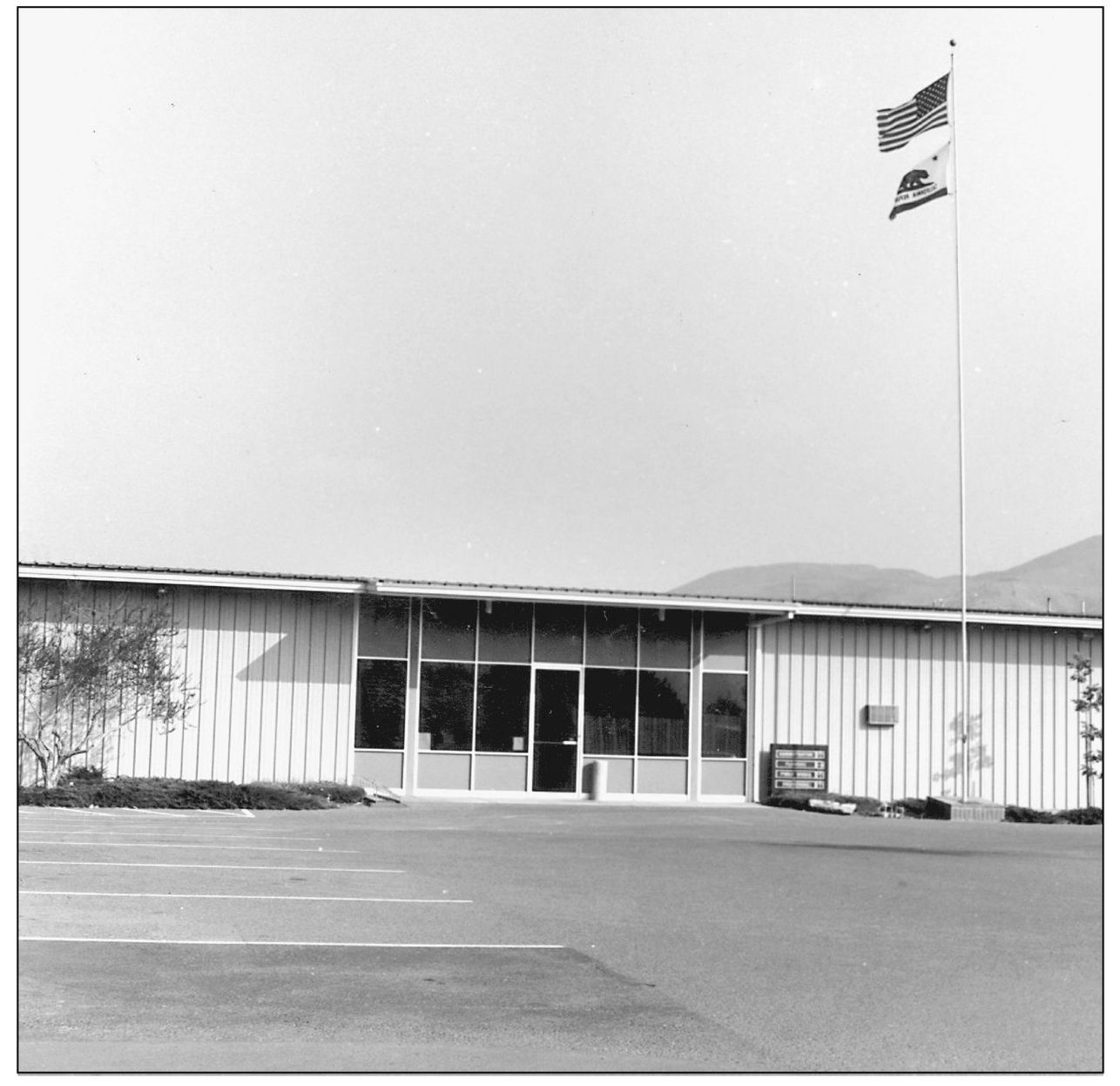
San Juan Capistrano City Hall is located at the end of Paseo Adelanto, adjacent to Trabuco Creek. A metal, warehouse-type building, it was originally dedicated in 1970 as a public works facility. For the past 35 years the “temporary” facility has been remodeled and trailers have been added to create additional office space.
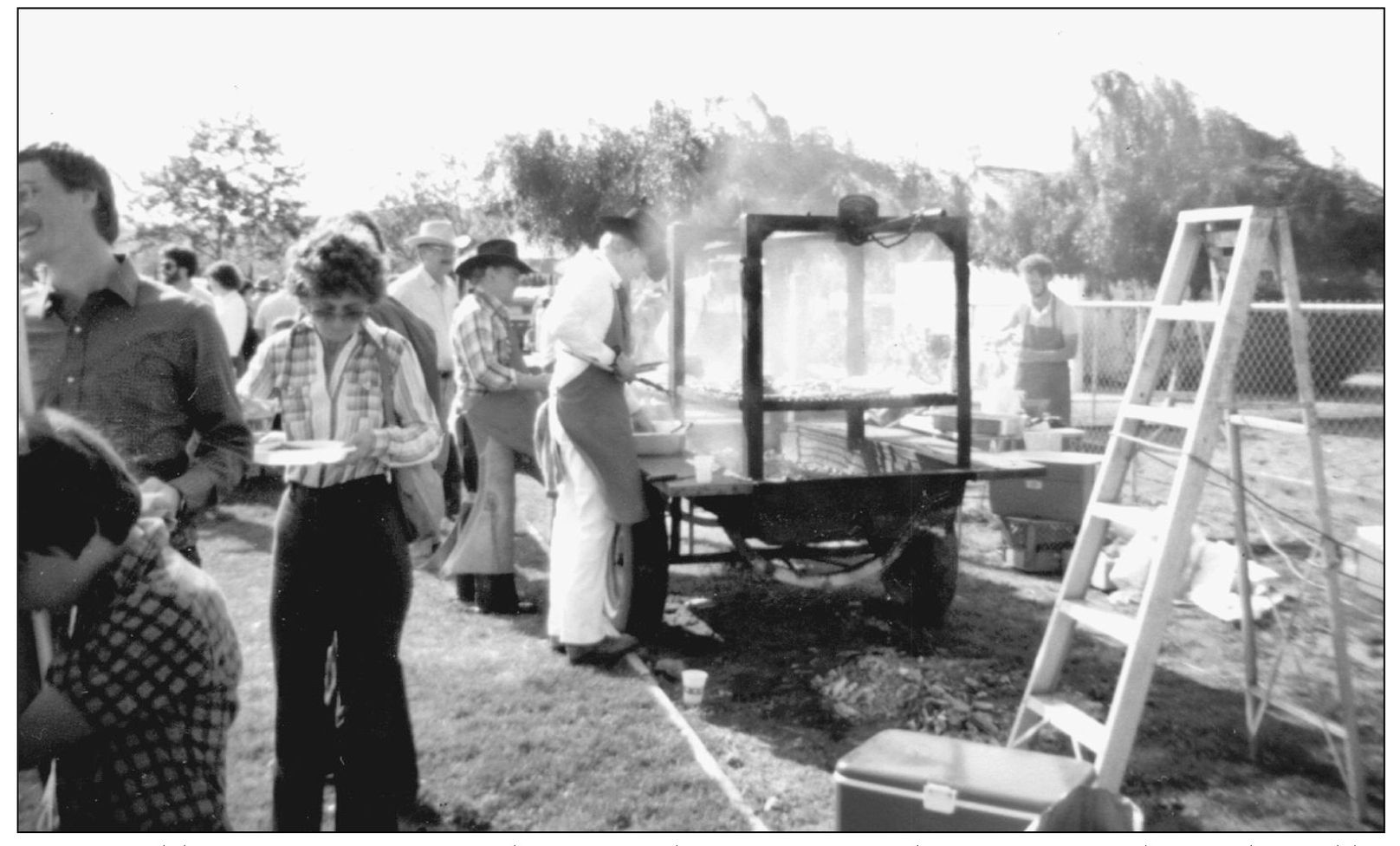
Larry Buchheim prepares a pot of his famous beans at one of the Heritage Barbecues hosted by the Historical Society annually in September. The event is held at the Amantes Camp south of the Ortega Highway, a few miles east of town. Hosts are the O’Neills of Rancho Mission Viejo and Rancho Santa Margarita fame, who have long been supporters of the society and its activities.
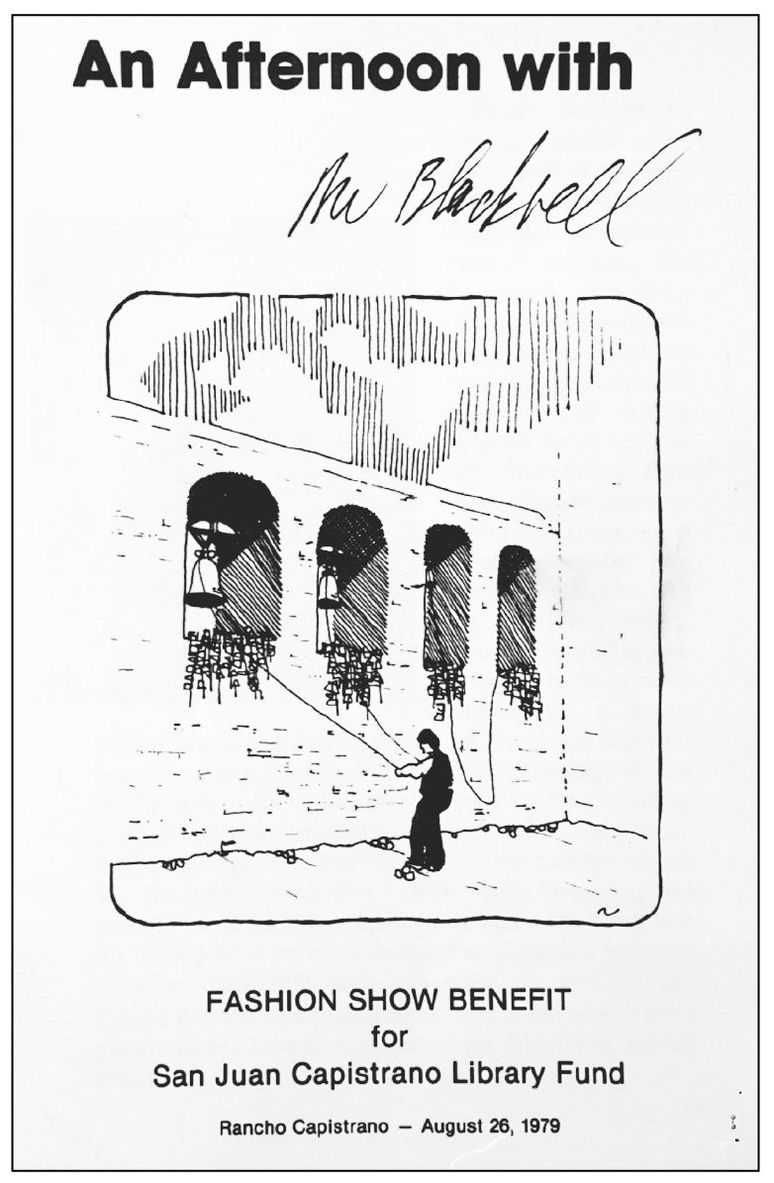
In 1979, the dream of building a regional public library in San Juan Capistrano began to form into a tangible goal. The first fund-raiser was a fashion show by the infamous Mr. Blackwell, an American fashion guru who annually published a “worst dressed list” that generally included well-known icons of the day. This was the cover of the program.
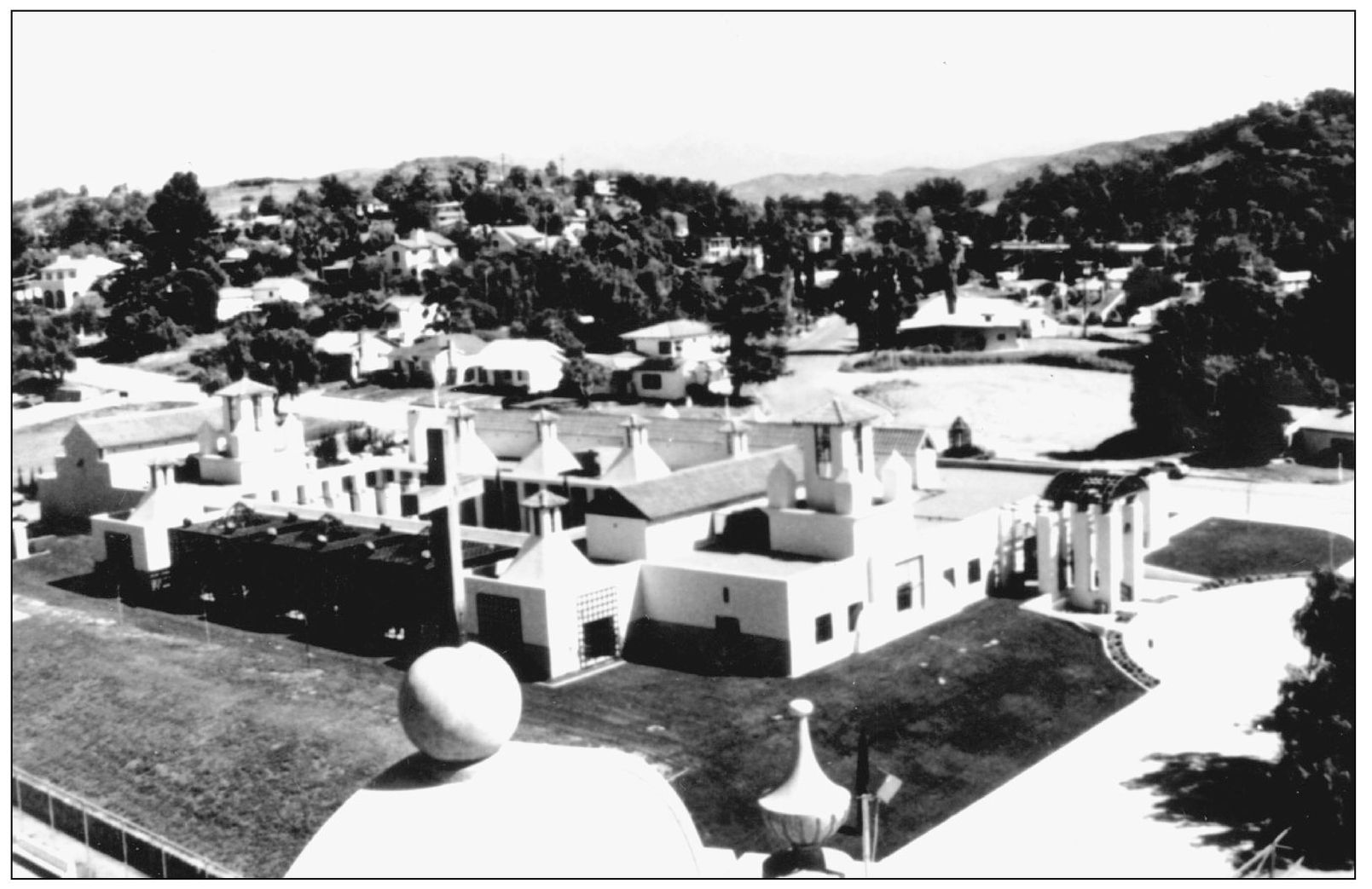
An international design competition invited architects to submit plans for the San Juan Capistrano Library, which was to be built on the corner of Acjachema Street and El Camino Real on the site of the high school gymnasium that was torn down in the 1970s. Michael Graves was selected as the architect, amid great controversy over the design. The library was completed in 1983.
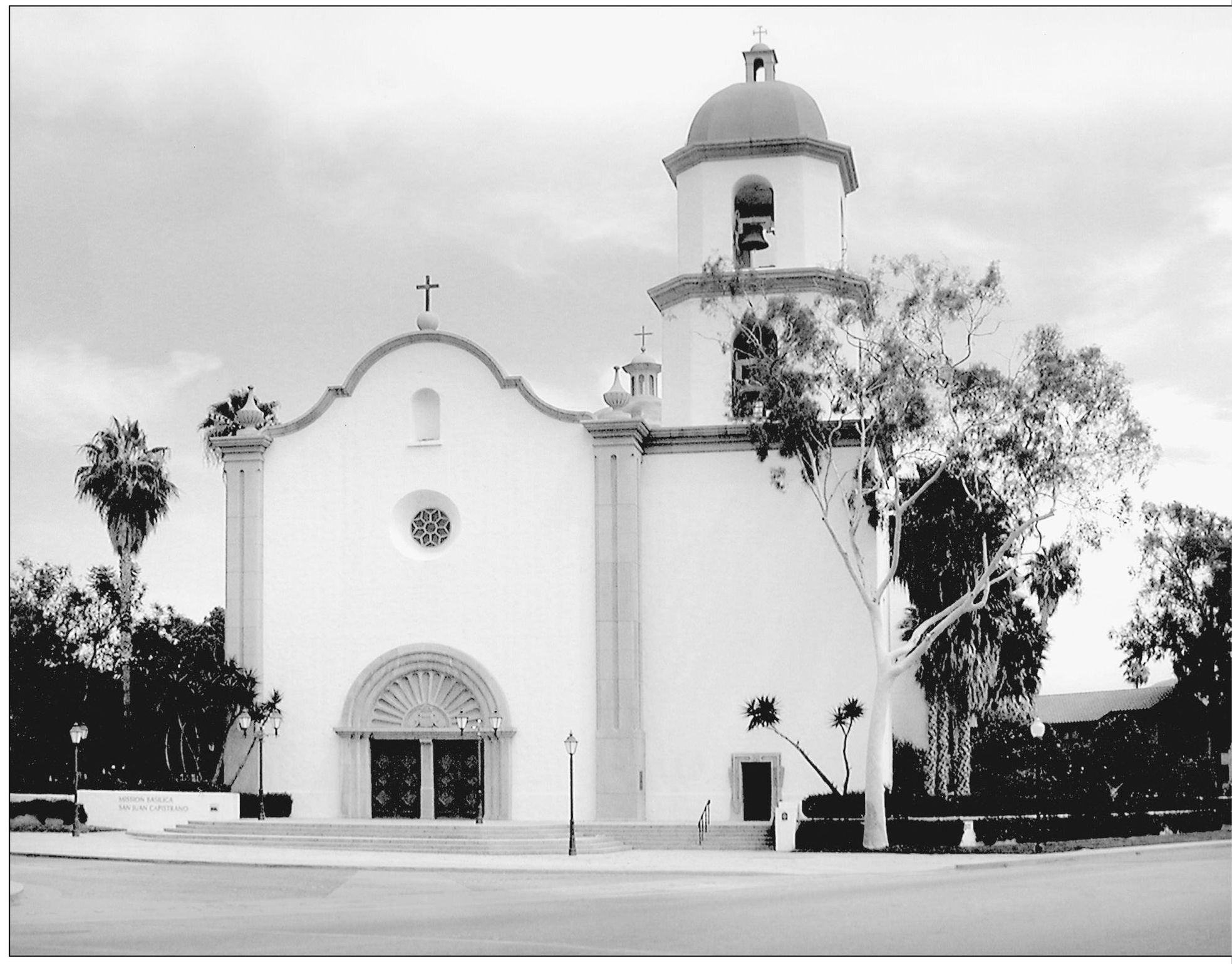
In July 1980, plans were approved by the city for the construction of a new parish church for the mission. Ground was broken on January 31, 1982, on the corner of Acjachema Street and Camino Capistrano very near the new library site. Designed by architect John Bartlett, the church took shape over several years. On October 23, 1986, the new church officially opened with the date being the Feast of St. John of Capistrano. It was dedicated on February 8, 1987, by Cardinal Timothy Manning, Bishop John Steinbock, and Msgr. Paul Martin. Built as a modern replica of the original Great Stone Church, the new church is called Mission Basilica San Juan Capistrano. The bells in the tower were donated by the Birtcher Family of San Juan Capistrano. (Courtesy Richard Clinton.)
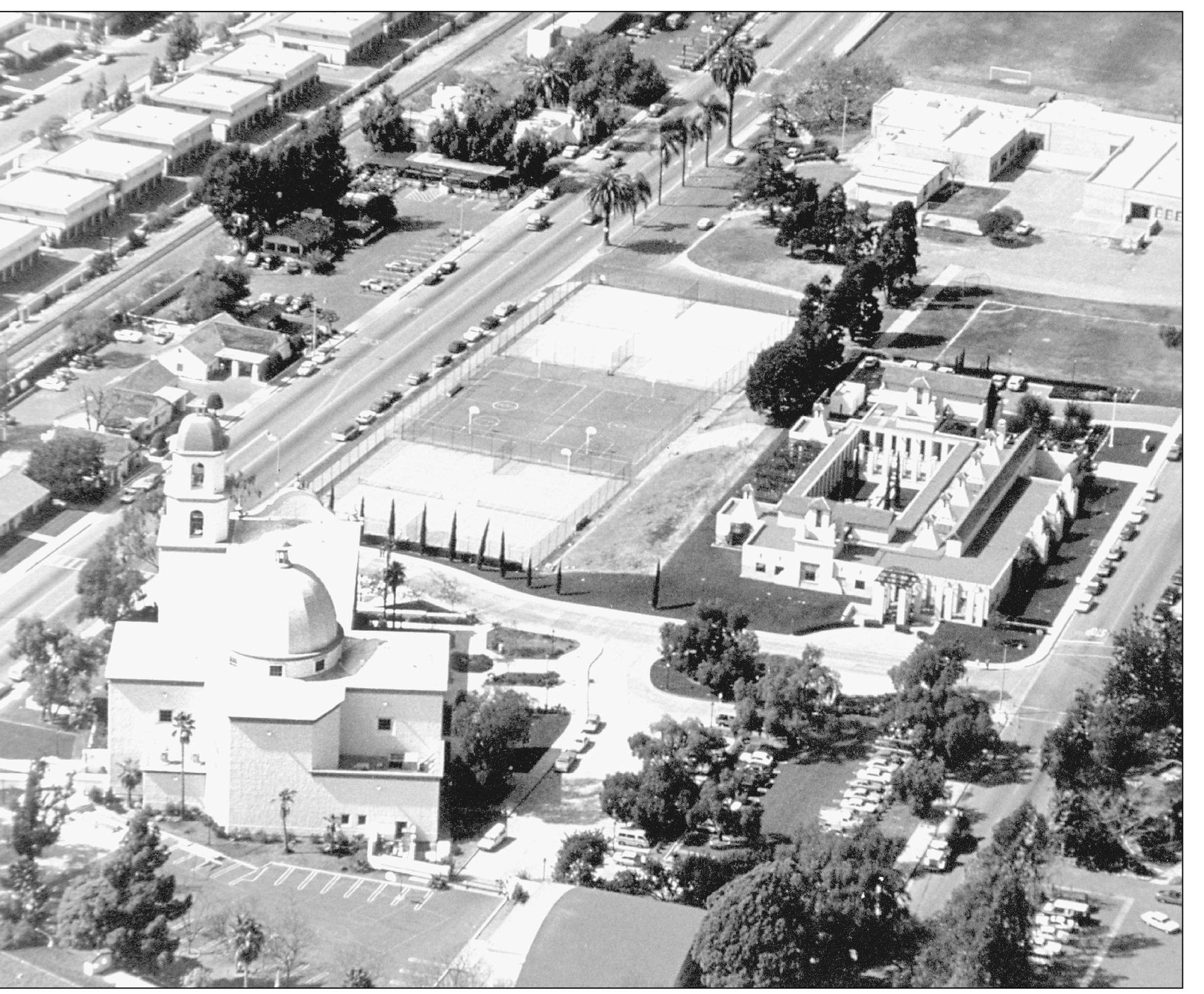
An aerial view looking north shows the rear of the new Mission Parish Church (left) and the front of the San Juan Capistrano Regional Library. Camino Capistrano is the street at left and the meandering street between the two landmark structures is Acjachema Street, named for one of the original Native-American villages near the site. The tennis courts, originally built to serve the Capistrano Union High School, are in the center of the photograph; there is a basketball court in between. The remaining buildings of the old school are at top left. The interior of Mission Basilica San Juan Capistrano was designed and painted by Norman Neuerberg. Michael Graves designed the interior of the library, including its original furniture.
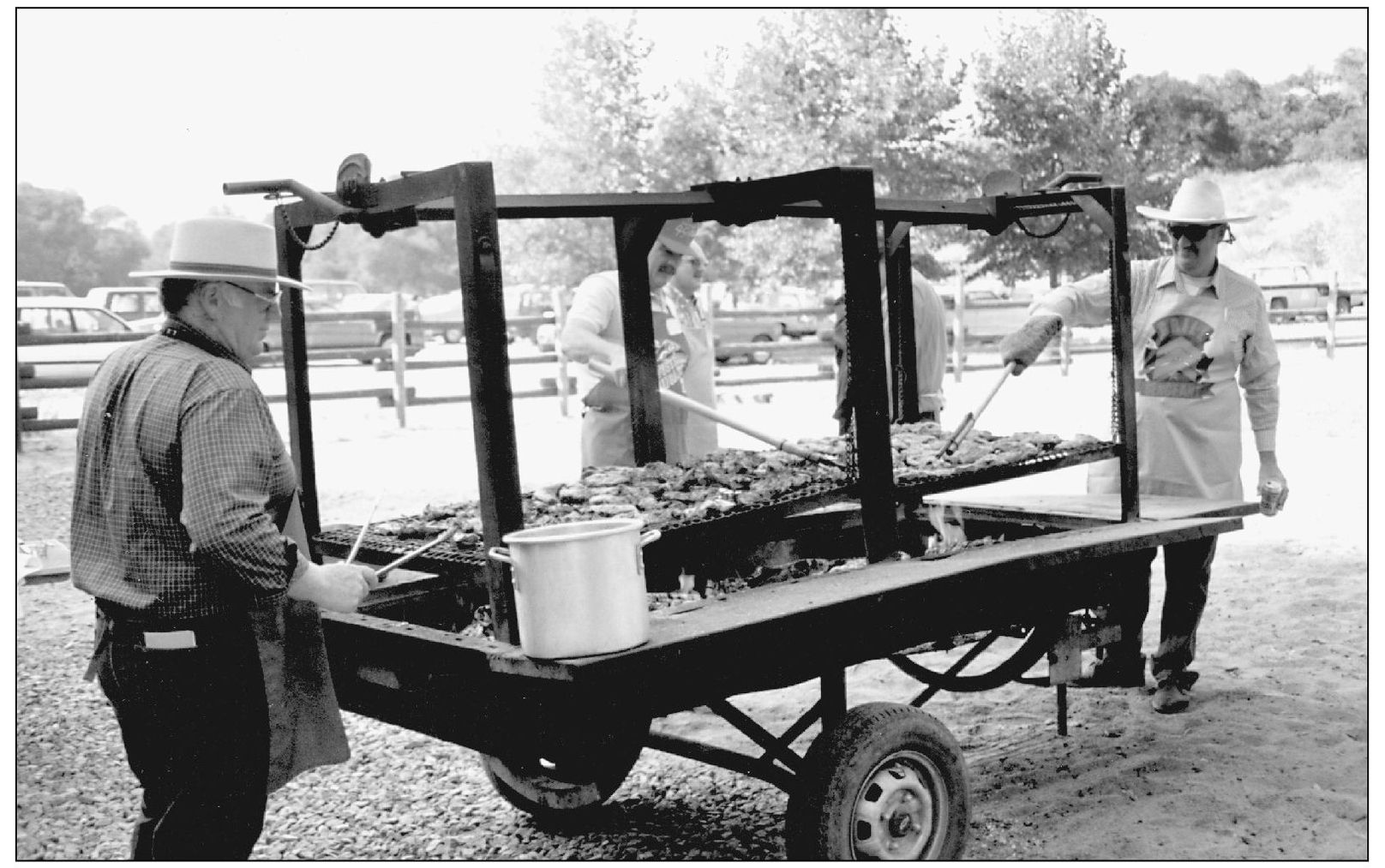
Tony Forster (left) and his brother Pat grill meat for one of the San Juan Capistrano Historical Society’s annual barbecues. Drawing hundreds of people from old families in the area, the annual event is an opportunity for old-timers to swap stories and become reacquainted. The oldest attendee is generally announced, along with the one that traveled the greatest distance.
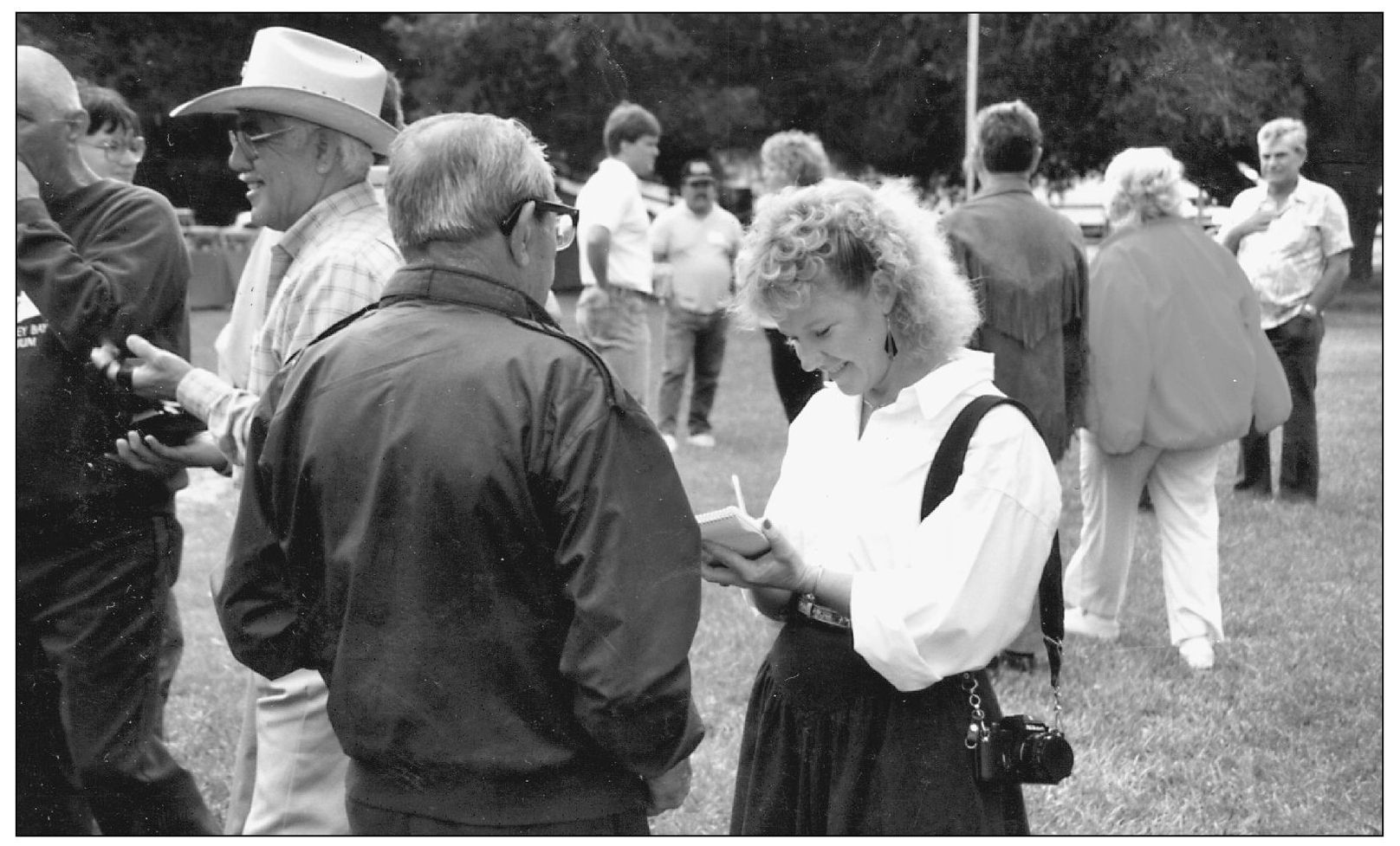
Marlene Draper interviews Paul Arbiso at the 1987 Heritage Barbecue. At the time, Arbiso was the community “Patriarch,” an honor bestowed on a longtime resident by the historical society. Arbiso was born in San Juan Capistrano and served as a bell-ringer of the mission. He was known for his charming tales about the old days in San Juan. Draper went on to become a school-board member.
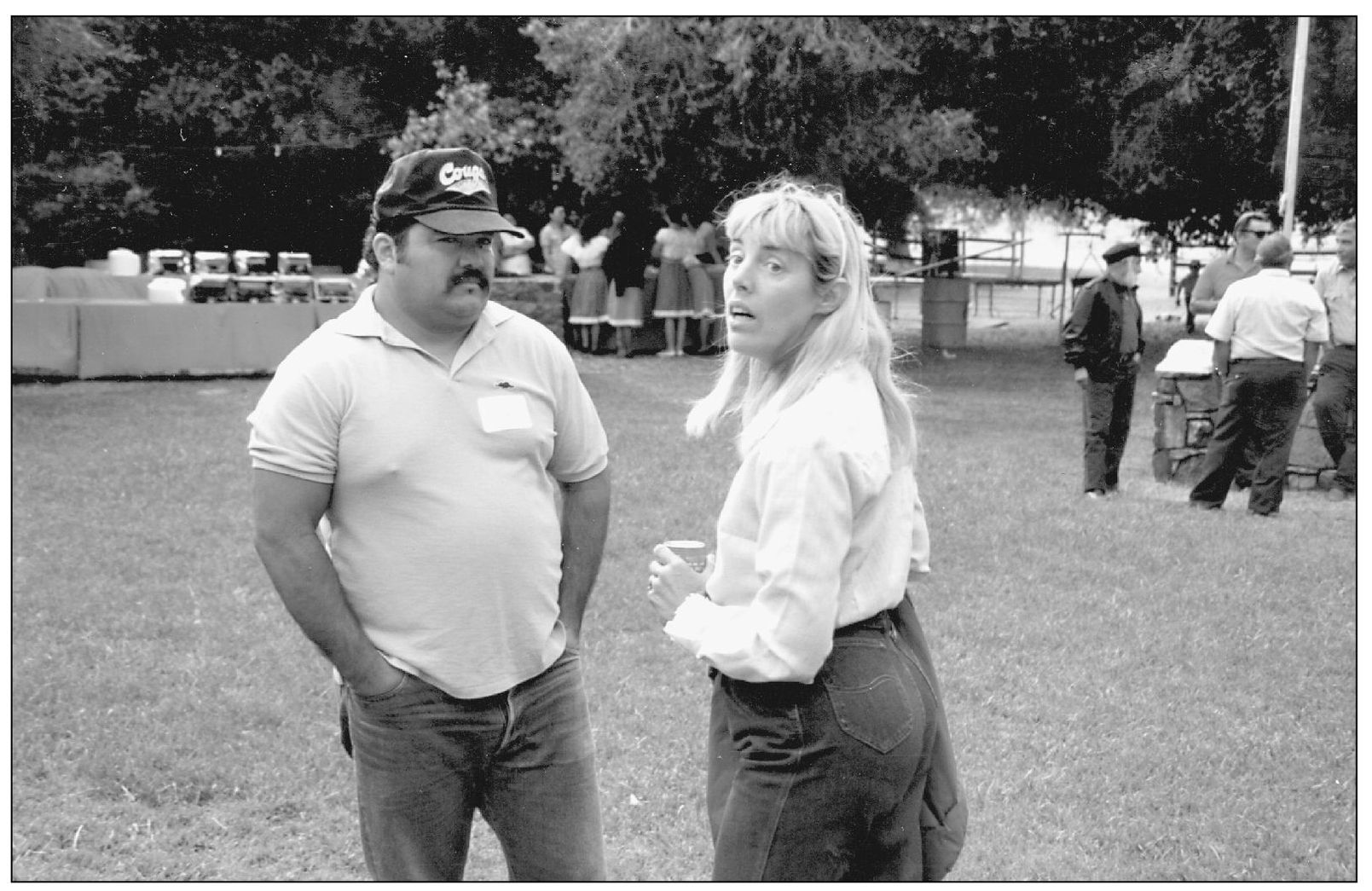
David Belardes, chief of the Juaneno Band of Mission Indians for many years, talks to Rita Avila during the 1987 Heritage Barbecue; both descended from old San Juan Capistrano families. Avila served as a downtown walking-tour guide, and Belardes was in great demand as an archeological monitor for construction projects in the region and also participated in many community activities.
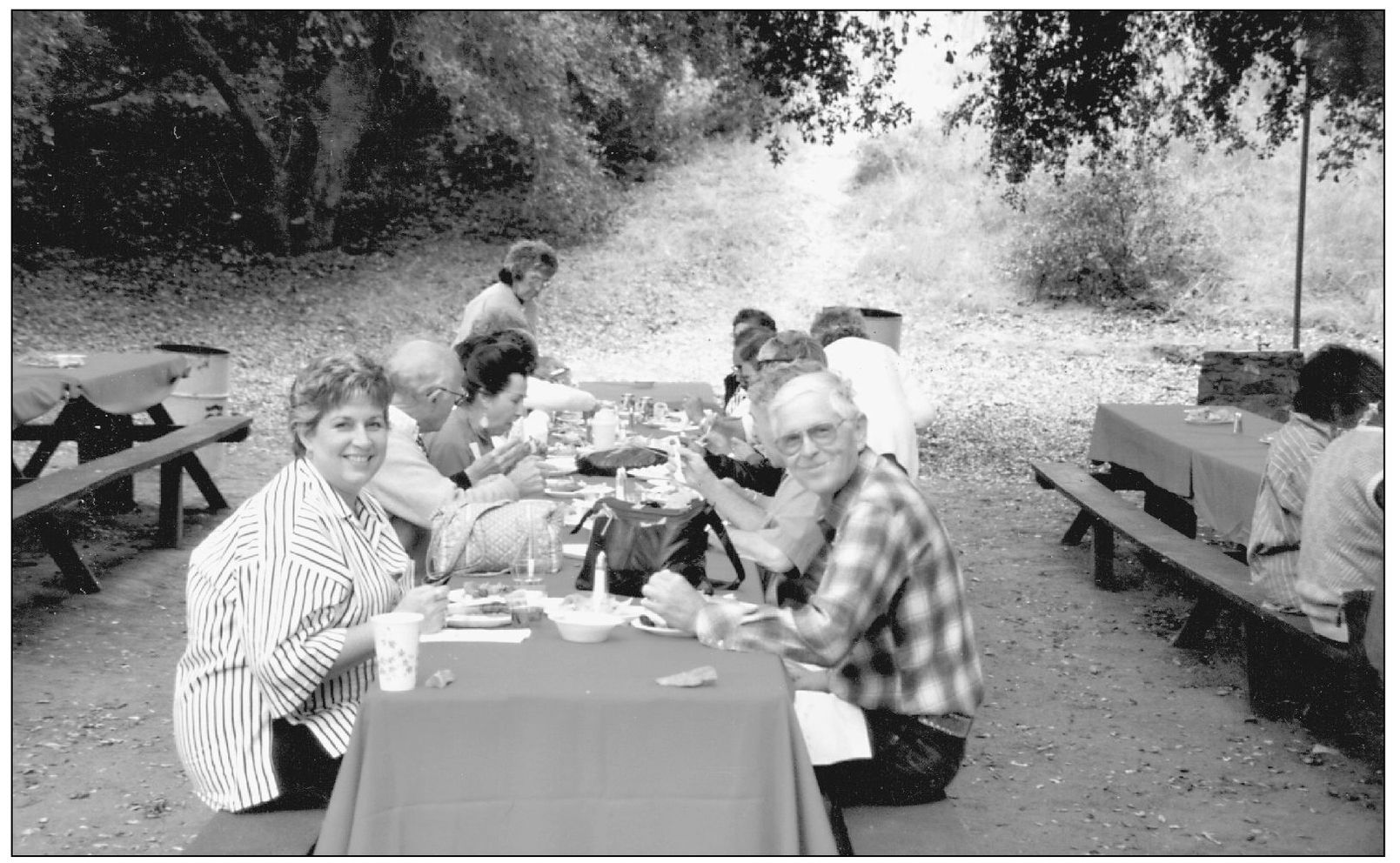
Pat Buchheim (left) and Larry Buchheim enjoy the fare at the 1987 Heritage Barbecue. Buchheim served on the San Juan Capistrano City Council for many years. His brother, Carl, was the city’s first mayor. Their father, Aaron Buchheim, raised wheat and barley from El Toro to Capistrano Beach and was responsible for many innovative farming practices.
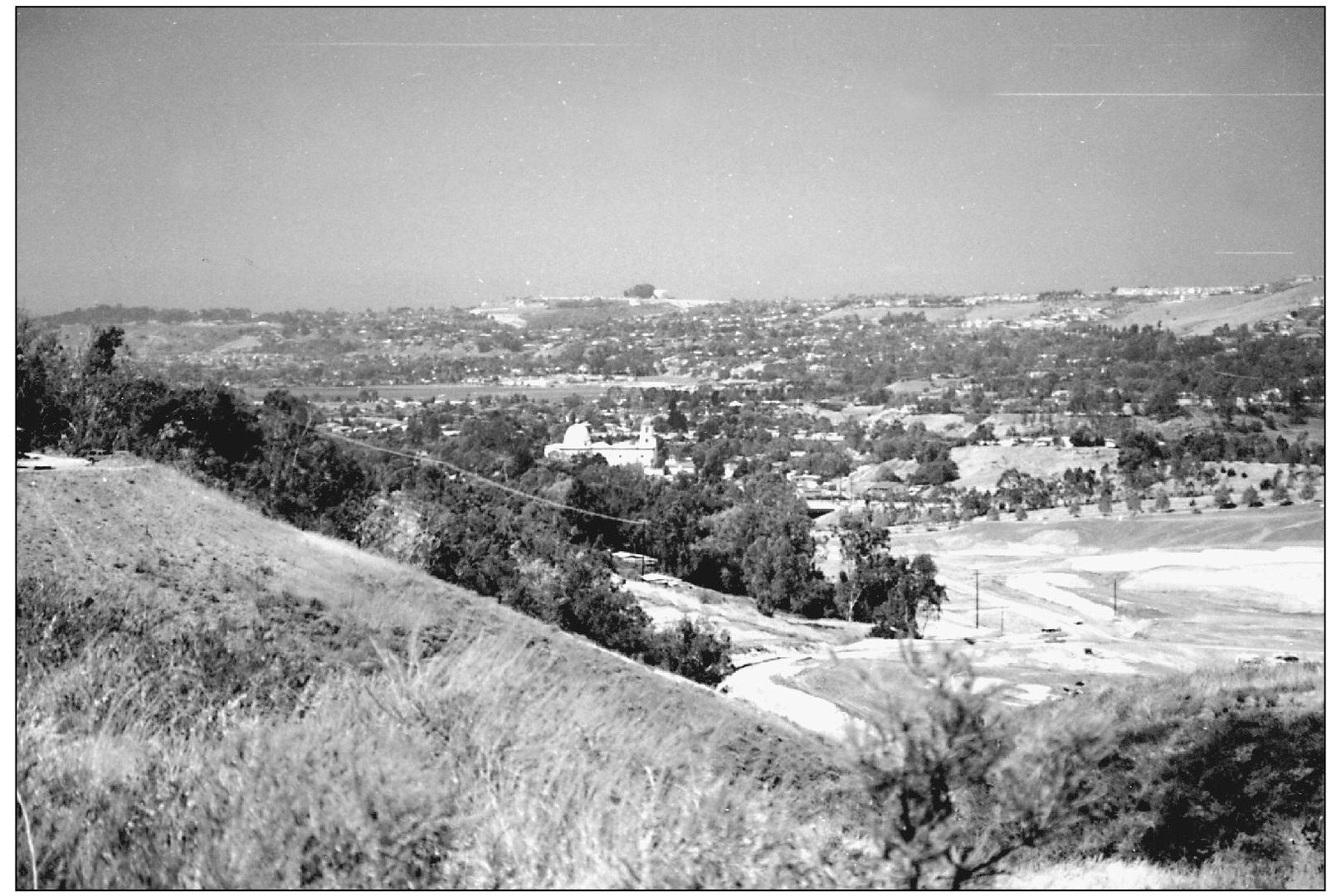
This view displays the new Mission Parish Church from a northeastern hillside looking west. The grading to the right appears to be the Marbella development, which was created in the late 1980s and included a golf course, shopping center, and a number of homes. Hills in the background are Dana Point, to the left, and Laguna Niguel, to the right.
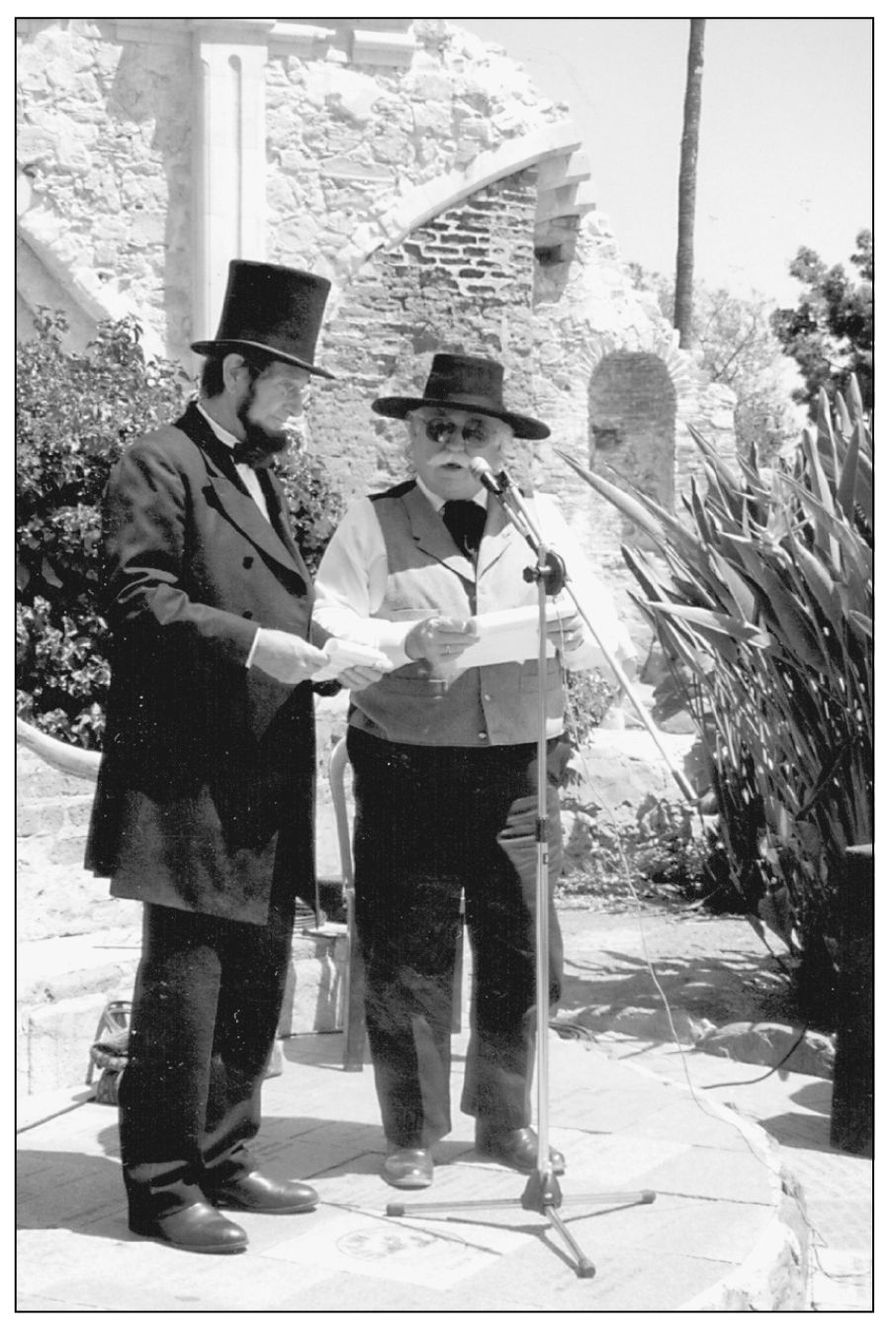
Tony Forster (right) participates in a ceremonial reenactment of the regranting of the Mission to the Catholic Church by a character representing Abraham Lincoln. The petition of Joseph Sadoc Alemany, made on behalf of the missions of California, was finally granted in 1864. The document with Lincoln’s signature, signed just before his assassination, is still in the mission archives.
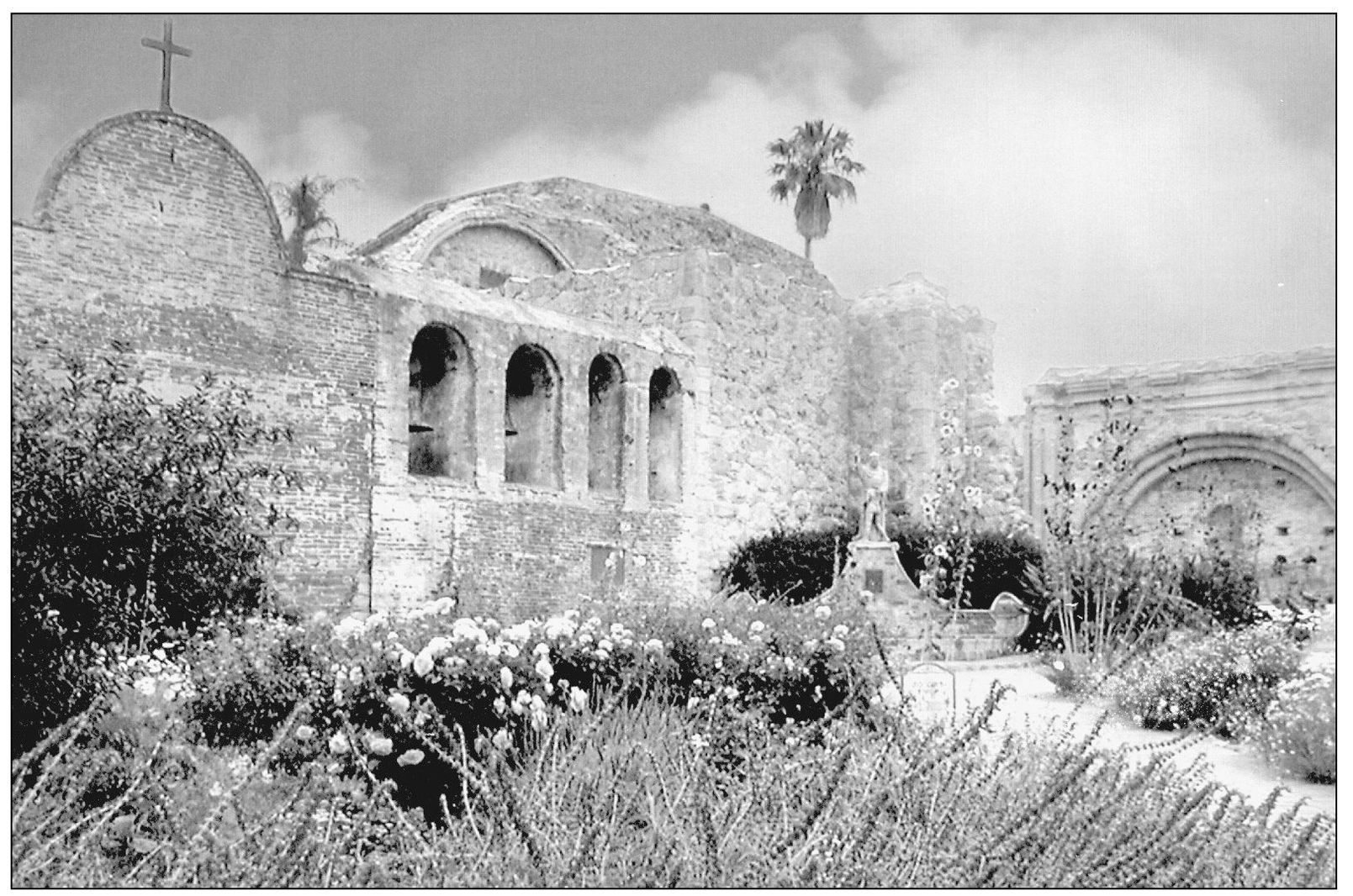
Richard Clinton photographed what has become the most famous view of the mission. The statue of Fr. Junipero Serra and an Indian boy, commissioned during Father O’Sullivan’s time, is at right center. The grounds of the mission are in full summer bloom. For seismic safety, protective scaffolding was placed around the Great Stone Church ruins (right) in 1989 and removed in 2003.
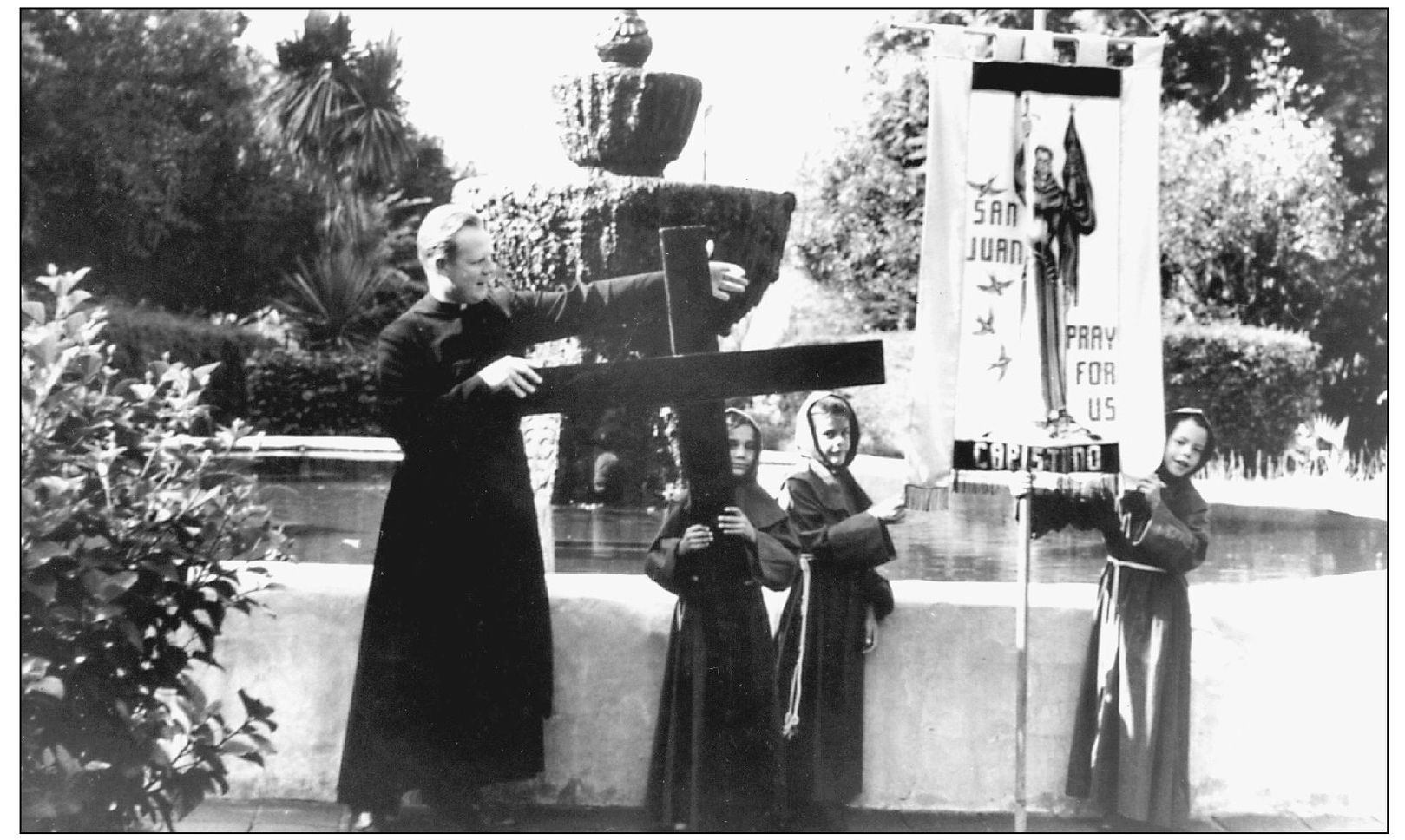
A young Fr. Paul Martin is shown with a group of boys in friars’ costumes preparing for a pageant at the mission. He was appointed administrator in 1976, pastor in 1978, and retired in 2003. During that year he was grand marshal of the 45th-annual Fiesta de las Golondrinas Parade in honor of his many years of service to the mission and the community.